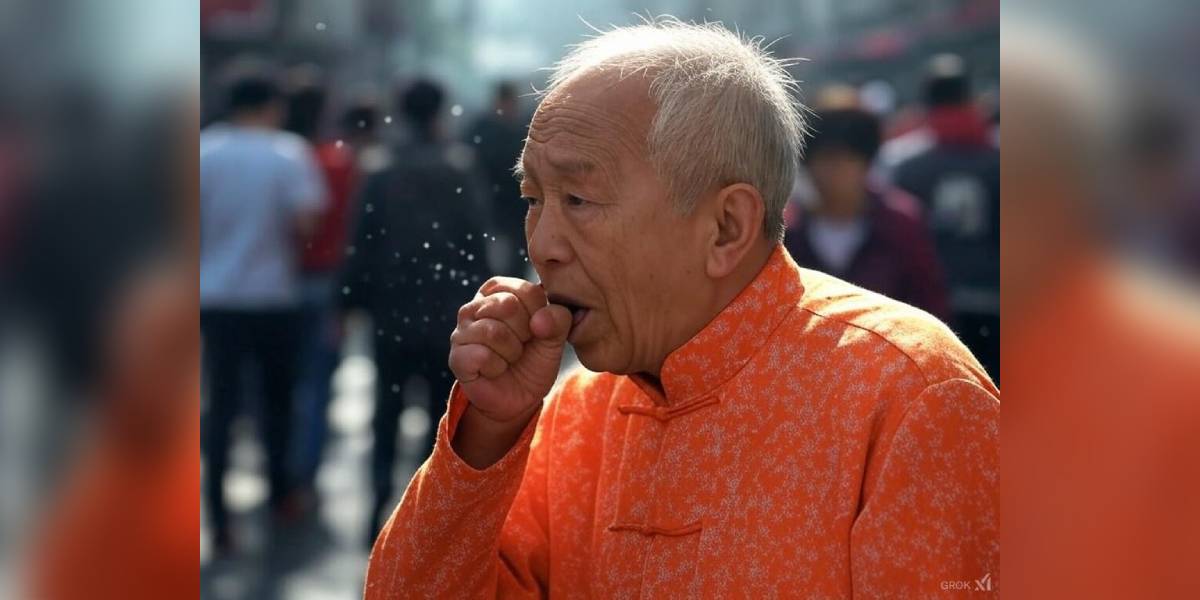Metapneumovirus is like any other respiratory virus that causes the common cold. It could cause flu-like symptoms in the very old and the very young.
Published Jan 03, 2025 | 7:09 PM ⚊ Updated Jan 04, 2025 | 1:24 AM

China has been facing an outbreak of HMPV, leading to increased concerns about public health.
Dispelling fears of a return of a Covid-19-like situation in the country, the Director-General of Health Services (DGHS) in India said there was nothing to be alarmed about the human metapneumovirus (HMPV) outbreak in China.
“There has been news circulating about a human metapneumovirus outbreak in China. Let me be very clear on that count. Metapneumovirus is like any other respiratory virus that causes the common cold. In the very old and the very young, it could cause flu-like symptoms,” DGHS Dr Atul Goel said in a statement.
He said data collected from across the country had not shown any spike in respiratory illness. An analysis of the data on outbreaks of respiratory ailments did not show any increase in December 2024.
“No cases have been reported in large numbers from any of our institutions,” he stated.
Dr Goel added that an increase in respiratory virus infections was normal in winter. “Our hospitals are usually well-prepared with the necessary supplies and beds to handle such situations,” he said.
However, he advised the public to adopt the usual precautions against respiratory infections.
“If someone has a cough or cold, they should avoid contact with large groups of people to prevent the spread of infection. Additionally, use a designated handkerchief or towel when coughing or sneezing,” he said in the statement.
“Take the normal medicines required for cold or fever if needed. Otherwise, there is no cause for alarm in the present situation,” Dr Goel added.
China has been facing an outbreak of HMPV, leading to increased concerns about public health.
The surge in respiratory illnesses, which also included influenza A and Mycoplasma pneumonia, resulted in overcrowding of hospitals and overwhelming healthcare facilities, particularly affecting children’s hospitals.
Reports indicated a notable increase in HMPV cases across northern provinces such as Beijing, Tianjin, and Hebei, with hospitals struggling to manage the influx of patients.
Social media posts highlighted these overcrowded conditions, although there was no official confirmation from Chinese authorities or the World Health Organisation (WHO) regarding a state of emergency.
HMPV typically causes flu-like symptoms, including cough, fever, nasal congestion, and shortness of breath.
In severe cases, it could lead to complications such as bronchitis or pneumonia, particularly in vulnerable populations such as young children and the elderly. The virus was first identified in 2001 and is known to circulate more frequently during winter months.
In response to the outbreak, Chinese health authorities have rolled out proactive measures to monitor and control the spread of respiratory diseases.
The measures included a pilot monitoring system aimed at managing pneumonia cases and other acute respiratory illnesses that often peak during winter.
Despite alarming reports circulating online, experts emphasised that while HMPV contributed to respiratory infections, it was not at pandemic levels similar to Covid-19.
However, a Bengaluru-based pulmonologist felt the outbreak of HMPV in China was a significant health concern.
“HMPV in China, five years after the Covid-19 crisis, is a significant public health concern. HMPV primarily causes respiratory symptoms similar to influenza and Covid-19, including fever, cough, nasal congestion, and shortness of breath,” Dr Sunil Kumar K, Lead Consultant – Interventional Pulmonology, Aster CMI Hospital, said.
“In severe cases, especially among young children and the elderly, it can lead to bronchiolitis or pneumonia,” he stated.
Preventive strategies included maintaining good hand hygiene, wearing masks in crowded places, and practicing respiratory etiquette, such as covering coughs and sneezes.
Dr Kumar also advised avoiding close contact with individuals exhibiting respiratory symptoms.
“Given the absence of a vaccine, these measures are crucial in controlling the spread of the virus.
While HMPV shares transmission characteristics with Covid-19, such as spread through respiratory droplets, it is generally less severe,” he said.
However, co-circulation with other respiratory pathogens, including influenza and mycoplasma pneumonia, as reported in China, could complicate clinical outcomes and pose additional challenges to public health systems, the pulmonologist said.
“Continuous surveillance and public awareness are vital in managing this outbreak. Learning from the Covid-19 pandemic, early detection, transparent communication, and adherence to preventive measures are key to mitigating the impact of HMPV and safeguarding public health,” he added.
(Edited by Majnu Babu).
